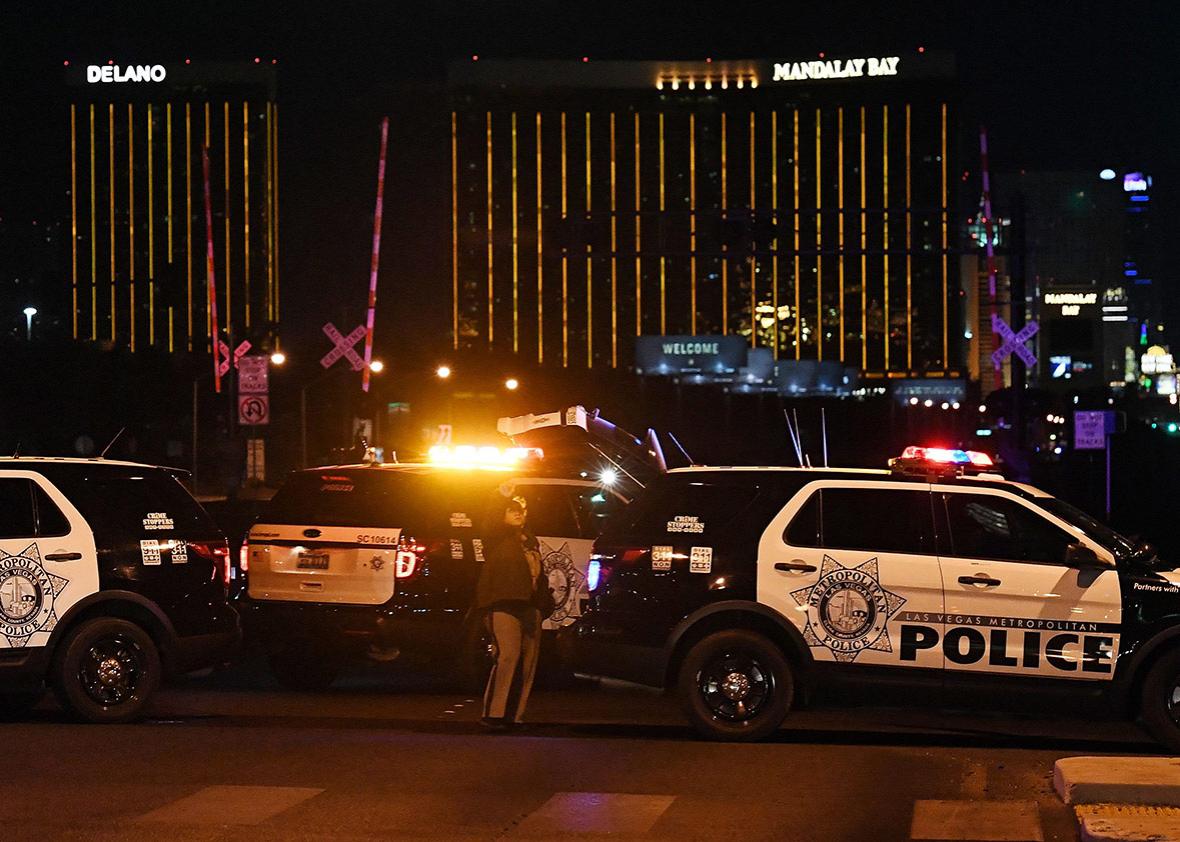A version of this article was originally published by the Trace, a nonprofit news organization covering guns in America. Sign up for the newsletter, or follow the Trace on Facebook or Twitter.
Did the Las Vegas shooter use an automatic weapon? Videos of the attack recorded by witnesses captured long bursts of gunfire, leading to speculation that the shooter used an automatic weapon, as the Washington Post notes. By the time the bullets stopped, an estimated 500 people had been rushed to local hospitals. That’s more than four times the casualty count of the Pulse nightclub mass shooting, which until Sunday night stood as the worst America has ever experienced.
Traces of the more than 10 rifles found in the shooter’s hotel room are underway by the Bureau of Alcohol, Tobacco, Firearms, and Explosives and authorities have yet to release information on the weapons. But the use of truly automatic firearms in crimes is almost unheard of. Such products are strictly regulated by the National Firearms Act of 1934, which requires that owners register them with the ATF.
Since 1986, U.S. gun-makers have been prohibited from manufacturing civilian guns capable of firing automatically. The relatively few machine guns in circulation are held mostly by collectors, who pay up to tens of thousands of dollars for them. ATF records show that 11,752 machine guns are listed as held by gun owners in Nevada.
There are other ways to get a rifle to approach automatic fire, however, and it’s those means that investigators are likely probing now.
As the Trace has reported, gun enthusiasts often use “bump fire”—a method using the recoil of a semi-automatic firearm to fire several shots in succession—to legally and cheaply hack their way to a faster rate of fire.
Reporter Alex Yablon focused his story on the Bump Fire stock, a $99 accessory that achieves the desired effect:
The Bump Fire stock doesn’t convert semiautomatic rifles to true automatic fire. Rather, it provides an effective means of engaging a gun’s trigger extremely quickly. Instead of pulling back the trigger to fire, the user places his or her finger slightly in front of the trigger and pushes the whole gun forward with steady pressure. The trigger hits the finger and the round goes off. Recoil pushes the gun back, but the shooter’s forward pressure immediately returns the trigger back to the finger, and so the gun fires off another round faster than the blink of an eye.
Here’s one in action:
Another offering from Slide Fire, is equally effective:
Bump Fire stocks are just one type of accessory that can increase the rate of fire. There are many. Here’s a video of the “GatCrank,” a small crank that can be attached to a firearm to mimic the function of a Gatling gun:
Because these accessories do not alter the inner workings of a firearm, they are not subject to regulation by the ATF. A few states—such as California and Connecticut—have restrictions on such devices, but Nevada does not.
In 2013, in the wake of the massacre at Sandy Hook Elementary School, California Sen. Dianne Feinstein proposed a law that would have banned bump-fire devices or any accessories designed to increase a gun’s rate of fire. The legislation never went to vote.
